Earlier this year, 5280: The Denver Magazine, featured a photo essay by Aaron Colussi. During the wildfire season of 2014, Colussi followed the Roosevelt Interagency Hotshot Crew from California to Arizona and more. Just doing their job, the Crew endured grueling conditions to protect the landscape from devastating wildfires.
Check out some of his photos below and on 5280.com. The National Forest Foundation had the opportunity to chat with Colussi about his interest and experience with the crew.
Visit AaronColussi.com for more information about Colussi's photography.
What sparked your interest in not only wildfires, but specifically hot shot crews?
I grew up in the Midwest where wildfires are a completely foreign concept. When I moved to Colorado wildfires became suddenly became a real threat in my life. While watching television, or reading the news, the stories were always about the fires themselves and the people they affected, rarely did the crews or the actual firefighters get mentioned. I made it my mission to do a piece on the individuals that are tasked with putting out the fires.
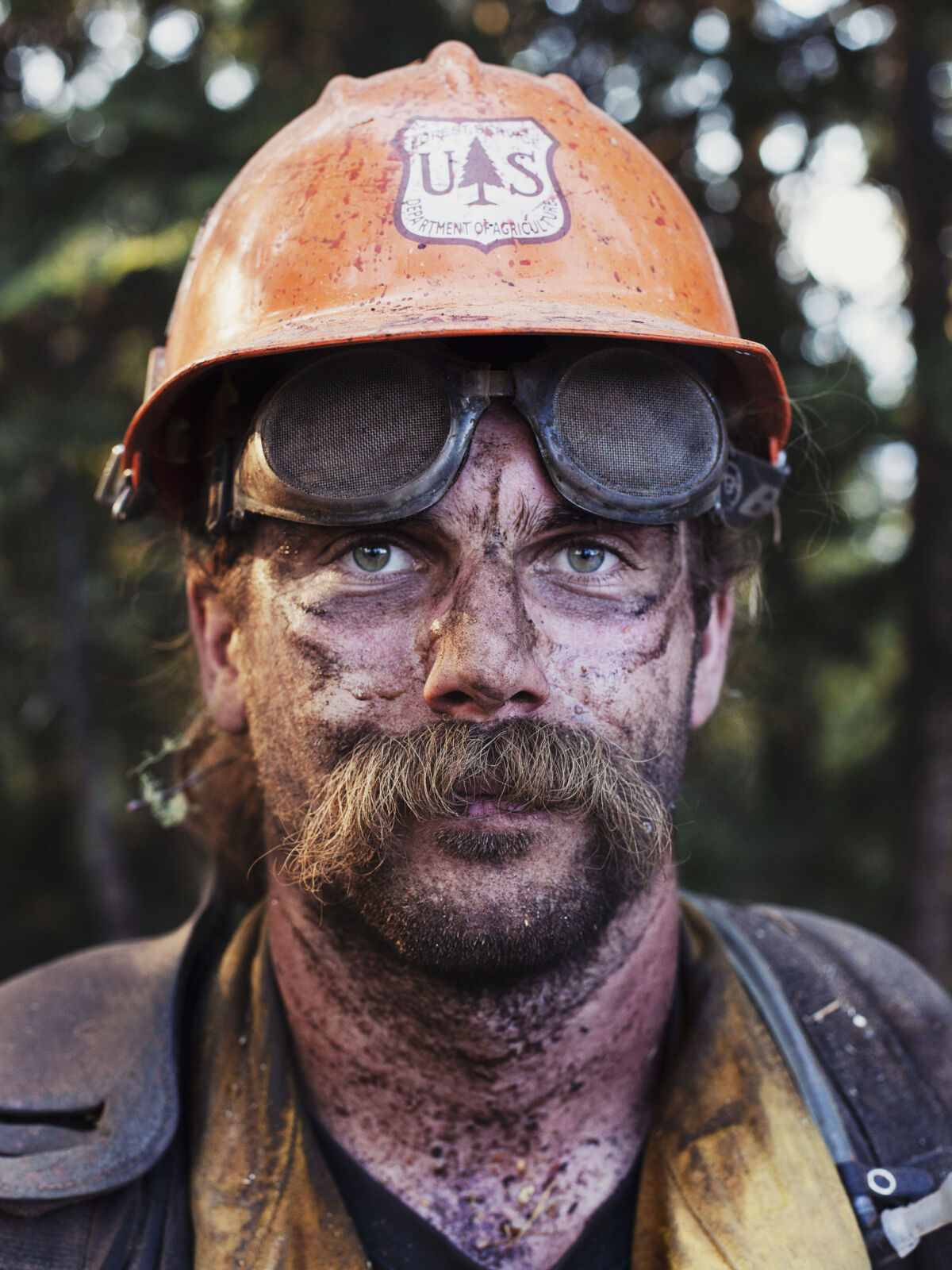
©Aaron Colussi
Thomas Partipilo takes a quick portrait break while working a saw team shift at the Happy Camp Complex in Happy Camp, California. August 2014
After spending so much time with the crew, what surprised you the most?
I knew that the days were going to be grueling and I tried my best to prepare, but the day to day of the crews is beyond intense. The crews will wake up before dawn, drive an hour to the fire, then hike up to 10 miles a day and put in 8 hour shifts of nothing but backbreaking line digging. All of this next to a blazing fire in already scorching weather conditions wearing full fire retardant gear and a hefty backpack. I gained a huge amount of respect for the crews.
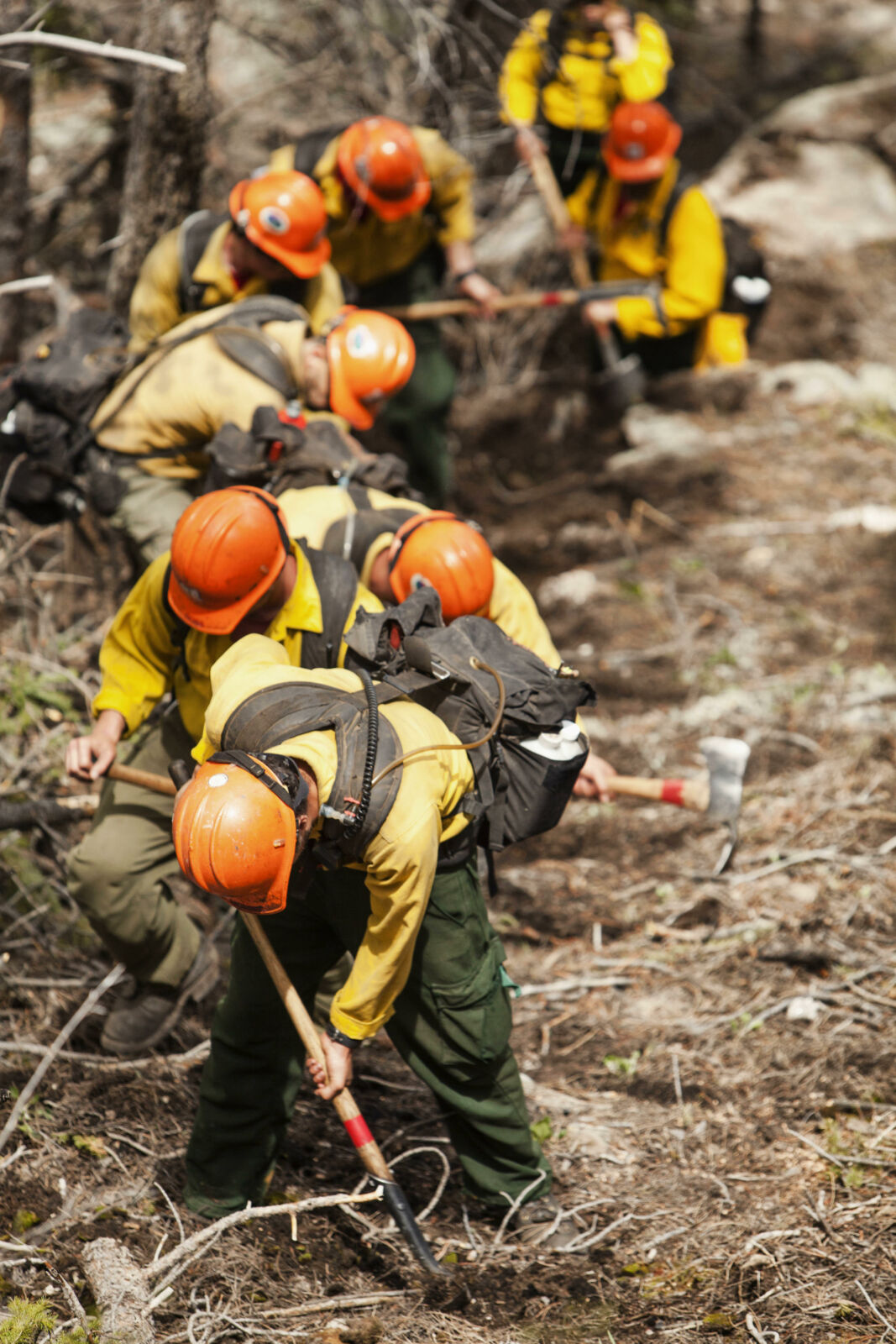
©Aaron Colussi
The Roosevelt Hotshot Crew works on line digging during a training segment in Northern Colorado. May 2014
What were some of the challenges of photographing this series?
Asides from how physically demanding the shoot was, the hardest part was getting access to the fire. The initial concept of my story was to follow crews at Colorado Fires, but (knock on wood) Colorado has had relatively mild fire seasons the past year and a half. So I had to travel to the Northwest in order to finish the story. I'm not fully sure how many people aided in the logistics of getting me to the fire, but I cannot say thank you enough to the Forest Service for helping make this story possible. And just a side note, everyone I met during the course of the shoot was more than accommodating.
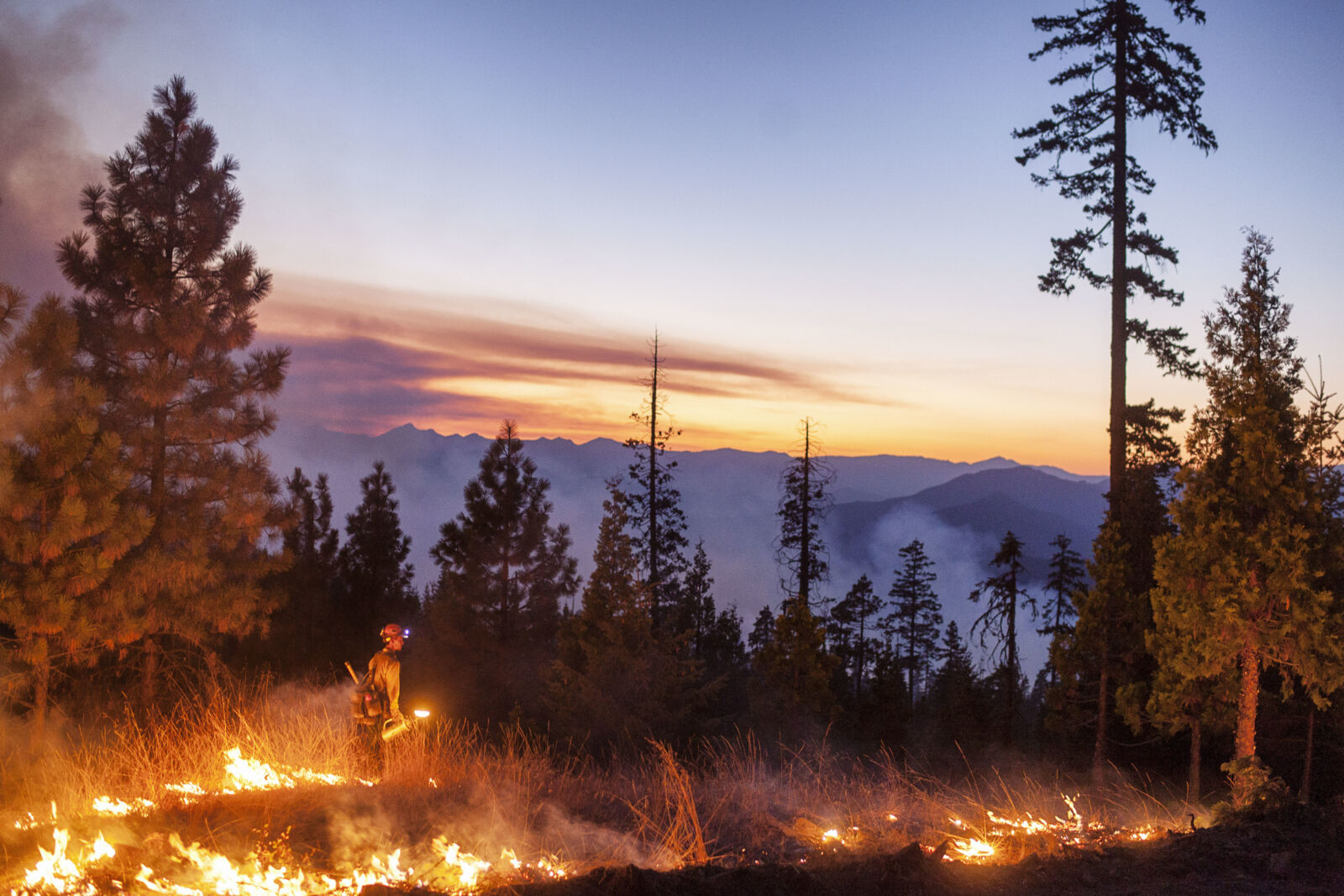
©Aaron Colussi
An unknown Hotshot Member surveys a burn operation on the Happy Camp Complex in Happy Camp, California Aug/Sept 2014
What do you think is one of the biggest misunderstandings about wildfires and the crews that fight them?
I think most people realize now, over the past few years, that the crews do an unbelievable job. There is no doubting the difficulty of their situation. I think maybe the biggest misunderstanding is how the fire is actually stopped. Of course it varies from fire to fire, but I saw literally a three foot wide dirt line that was hand dug, stop a massive blaze. It does not always take a jumbo jet and loads of helicopters to stop a fire, sometimes a simple hand line will do. And on the flip side, sometimes nothing will stop a fire and the crew can only slow it down and wait for cold weather or massive rains.
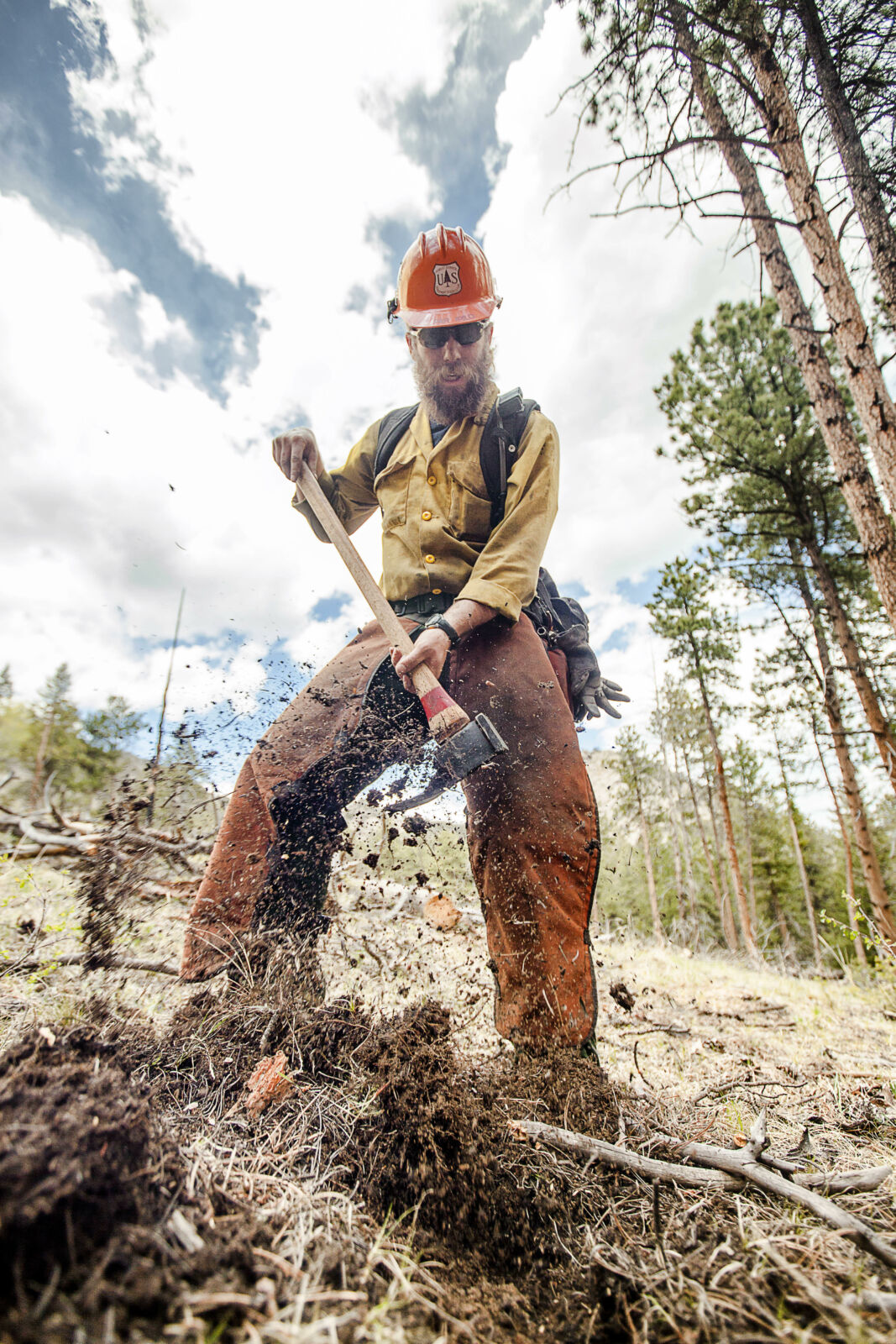
©Aaron Colussi
Thomas Partipilo works on a hand line during a dig operation in Northern Colorado. May 2014
What was one of the most memorable moments with the crew?
I was with the crew on a fire in Northern California. A big fire and we were about to start a burn operation to attempt to slow the blaze on top of a ridge. Just before we start the burn one of the members jumps in to the brush and scurries around for a few seconds. No one is totally sure what he is doing until he raises his hand and lifts up a small field mouse. The crew member takes the field mouse and walks to the far end of the line that was dug and puts the mouse in a safe place away from the path of the fire.
More than any other moment during the course of the shoot, it made me reflect on why these guys are doing this. They truly care about what they are doing and the forests and communities they save and protect. When you meet a crew member who has been working fires for 8 years or 15 years, it's not for the money, the toll on their body does not justify that, it's because when they are finally able to extinguish a blaze, they can look back at the forest they saved and gain an enormous sense of pride at what an astonishing accomplishment that is.
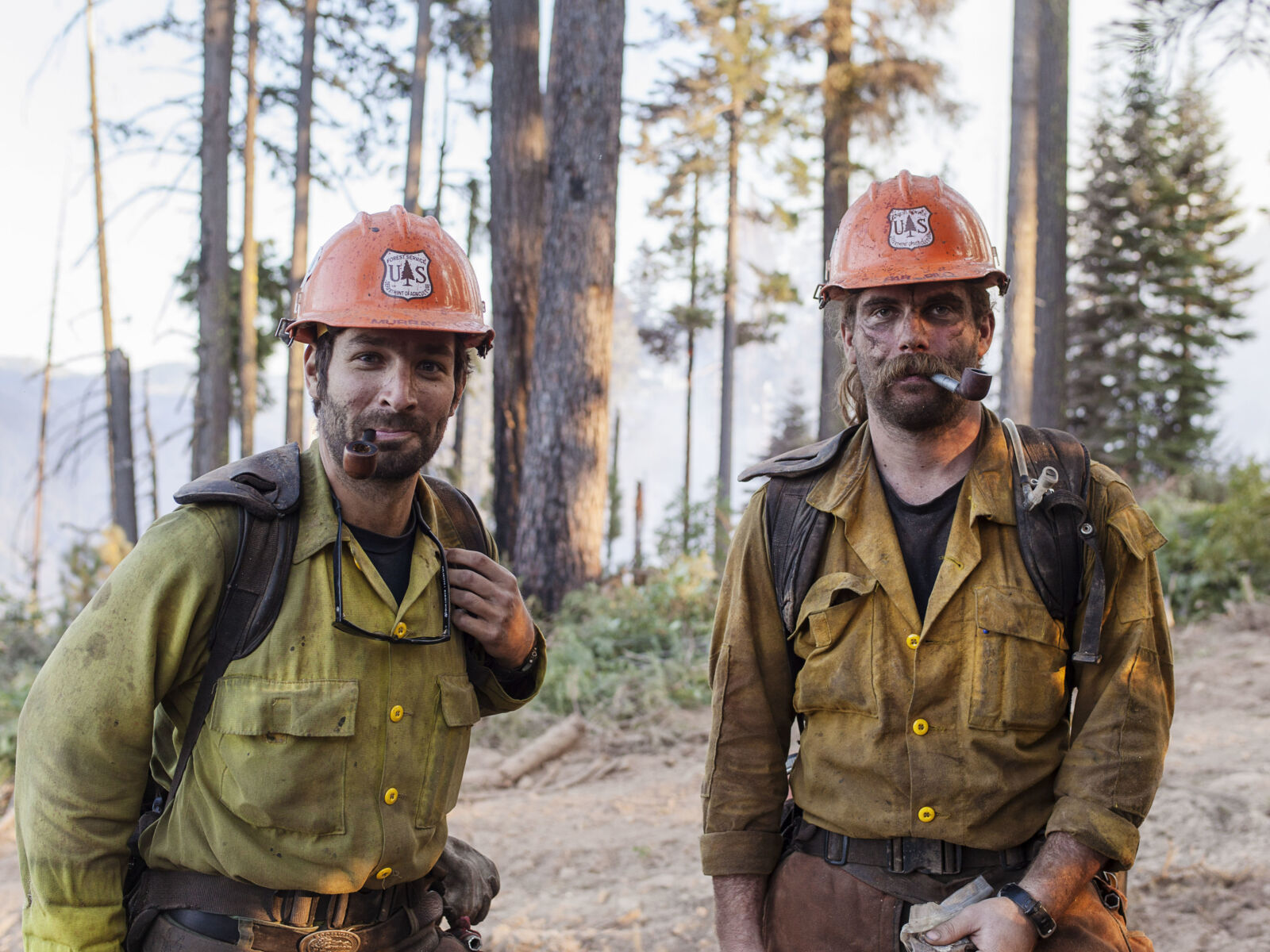
©Aaron Colussi
Thomas Partipilo and an unknown Hotshot Crew Member enjoy a quick pipe after their shift and before the night crews take over. A note that the pipes were not actually lit, it was more of a superstitious ritual. Happy Camp, California. Aug/Sept 2014
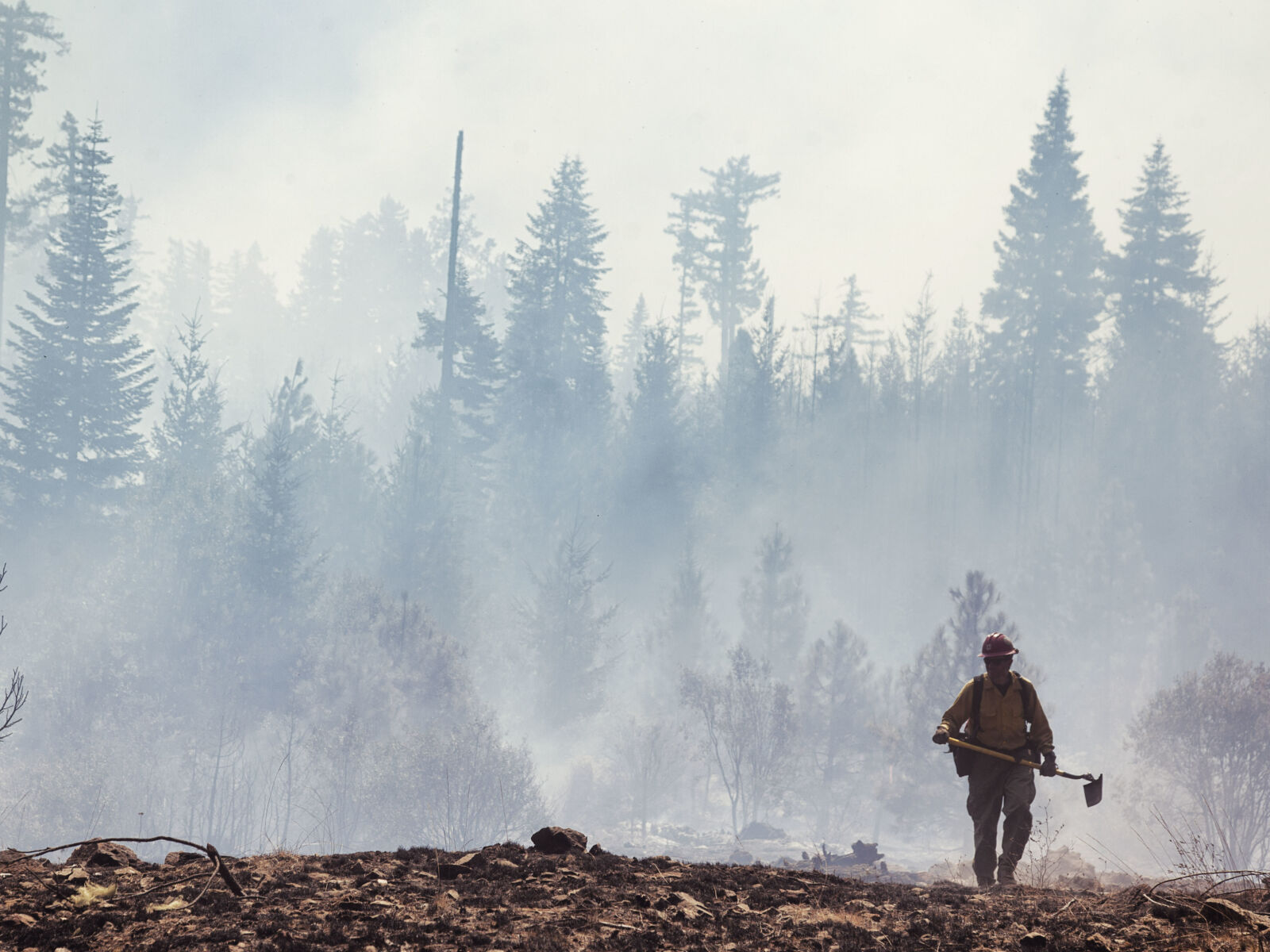
©Aaron Colussi
Hot Shot Nathan Thompson surveys a line that will soon be hit with retardant via plane. Happy Camp, California. Aug/Sept 2014

